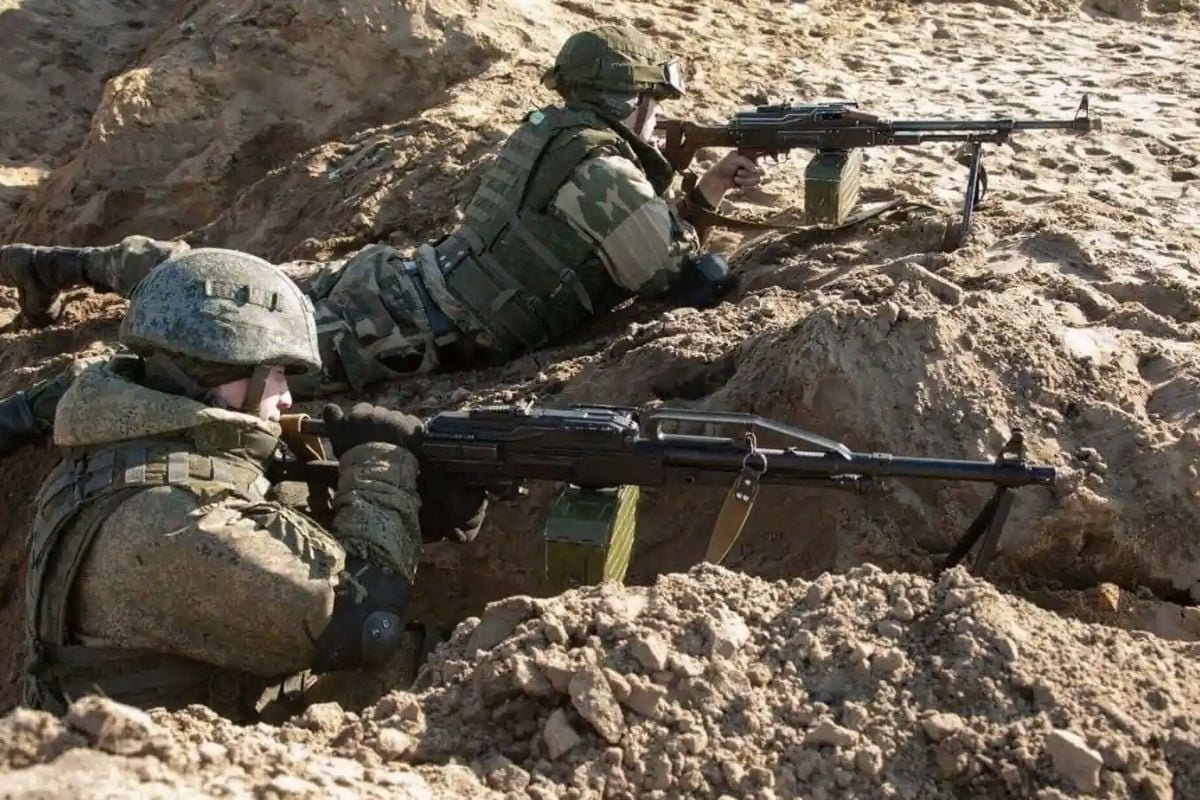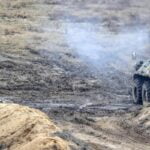Russia will broaden its tactical drills with Belarus including somewhere in the range of 30,000 soldiers close to Ukraine’s line, the public authority in Minsk said, referring to an increase in brutality in eastern Ukraine as Moscow’s stalemate with the West over the fate of Eastern Europe develops.
The activities had been planned to unwind this end of the week, yet Belarus said Sunday they would proceed with endlessly after Russian-supported powers blamed Ukraine for shelling nonmilitary personnel regions in the breakaway domains they control in the Donbas area. Western authorities have upheld Kyiv’s affirmation that the cases are important for an activity pointed toward giving a guise to a Russian-drove assault.
Countries bordering Belarus have been “pumped with modern weaponry,” Belarus Defense Minister Viktor Khrenin said. Europe is being pushed toward war, he added, and “has begun to smell strongly of gunpowder.”
Russia’s Defense Ministry didn’t quickly react to a solicitation for input, yet Yuri Shvytkin, delegate top of the Russian State Duma’s guard advisory group, told Russian news office Interfax on Sunday that the point of expanding military drills is “to prevent provocative actions by the armed forces of Ukraine against our country and Belarus.”
Ukrainian Defense Minister Oleksii Reznikov said the expansion of Russia’s tactical drills in Belarus was normal.
“We ought to be ready to resist powerful pressure in the coming period. The enemy intends to destabilize Ukraine from within, to scare us and force us into capitulation. But we will stand firm,” he said.
On Friday, President Biden said that he anticipated that Russian President Vladimir Putin should send off a Russian attack of Ukraine before long, with targets including the Ukrainian capital, Kyiv. The Kremlin has been looking for a conventional assurance that the North Atlantic Treaty Organization won’t ever concede Ukraine and other previous Soviet states as individuals and roll back troop arrangements to business as usual in 1997, preceding the coalition conceding Eastern and Central European states.
On CNN’s “Condition of the Union,” Secretary of State Antony Blinken said that the continuation of Russian military activities and massing of troops on the Ukraine line is important for the anticipated preparation Moscow has been laying for a Russian attack of its more modest neighbor.
“All of this, along with the false flag operations that we’ve seen unfold over the weekend tells us that the playbook we laid out is moving forward,” he said.
Regardless of the limiting way toward a discretionary answer for the deadlock, conversations are proceeding.
Mr. Blinken said he actually wanted to meet next with his Russian partner, Foreign Minister Sergei Lavrov, one week from now in Europe-except if Russia attacks previously.
“Until the tanks are actually rolling, and the planes are flying, we will use every opportunity and every minute we have to see if diplomacy can still dissuade President Putin from carrying this forward,” he said.
French President Emmanuel Macron, in the meantime, talked with Mr. Putin Sunday. In an outline of their discussion, the Kremlin said “The President of Russia noted that the reason for the escalation is the provocations of the Ukrainian security forces.”
It said consideration was attracted to what is depicted as NATO’s “progressing siphoning” of present-day weapons and ammo into Ukraine, yet that the two sides concurred the need to increase determination to track down a strategic arrangement.
Mr. Putin also “reiterated the need for the United States and NATO to take Russian demands for security guarantees seriously and respond to them concretely and to the point,” the Kremlin said.
The joint Russia-Belarus military activities sent off on Feb. 10 were scheduled to end on Sunday and framed a piece of a bigger Russian development around Ukraine that Western authorities say includes up to 190,000 assistance individuals.
Russia had more than once said it plans to pull the soldiers back once the drills are finished, yet heightening battling in eastern Ukraine this week has incited claims from Moscow that Ukraine is preparing a tactical hostile to retake an area from Russian-moved powers in the Donbas district. The separatists held onto areas of the country’s east in an outfitted struggle that began in 2014 and has proceeded from that point onward, asserting in excess of 14,000 lives.
On Sunday, Russia’s Federal Security Service, which controls the nation’s boundaries, said in excess of 30,000 inhabitants from oneself declared Donetsk and Luhansk People’s Republics in the Donbas region had crossed to Russia’s adjoining Rostov locale since the beginning of a mass departure of occupants reported by experts in the Russian-controlled regions on Friday. In Russia, the Rostov and Voronezh districts, which line Ukraine, declared highly sensitive situations, referring to the deluge of individuals.
Ukrainian military representative Dmytro Lutsyuk said on Sunday evening that 20 occurrences of gunnery discharge by Russian-drove powers had been recorded over the course of about 24 hours and that one help part had been injured and taken to a clinic with shrapnel wounds. Mr. Lutsyuk added that in excess of 860 occupants of the breakaway republics had entered through a line crossing with Ukraine since Saturday.
Keeping a large number of Russian soldiers in Belarus would set Russia’s hold over its post-Soviet partner, whose tyrant chief, Alexander Lukashenko, looked for Mr. Putin’s help during a monstrous influx of fights against his contested re-appointment in August 2020 in the midst of resistance charges of extortion. Moscow has supported Mr. Lukashenko’s system monetarily and militarily and presently stands to benefit as Mr. Lukashenko backs Russia’s line on Ukraine as Russia upheld his crackdown on resistance to his standard.
The waiting presence of Russian soldiers in Belarus would likewise stamp a huge change in the nations’ chronicled relationship. Mr. Lukashenko has for some time been one of Mr. Putin’s staunchest partners however has up to this point opposed endeavors to surround Belarus’ independence and been hesitant to embrace a drawn out Russian military presence in his country.
Close by the activities in Belarus, Russia has additionally been leading huge scope maritime moves on the Black and Azov oceans, with warships in exceptional numbers from Russia’s Baltic, the Black Sea, and Northern Fleets.
Russia recently said these maritime drills would close Saturday night. While the warships and support vessels have fallen on their edge, they stay nearby.
“The exercises should have ended last night,” said Andrii Ryzhenko, a retired Ukrainian navy captain now with the Center for Defense Strategies, a Kyiv-based think tank. “But there is no sign that they are wrapping up. Particularly, our concern is landing ships.”
On Friday, six land and/or water capable boats from Russia’s Baltic and Northern Fleets repositioned close to the port of Chornomorske, on Crimea’s western cape, about 40 miles from the shore of Ukraine’s southern Kherson locale, as per Andrii Klymenko, a protection and sea investigator with the Black Sea Institute of Strategic Studies, a Ukrainian research organization. Supporting the arrival create are a corvette, a rocket boat, a minesweeper, and salvage pulls, Mr. Klymenko said.
Russia reported recently that maritime activities close to the Crimean coast would go on through March 11.
Regardless of restricted live-fire drills broadcast on Russian state-claimed TV, Ukrainian examiners and previous military authorities said the Russian warships didn’t take part in huge scope moves in the previous week and remained for the most part fixed. The absence of action comparative with past Russian activities on the Black Sea passed on Ukrainian authorities to estimate Russian expectations.
The drills’ effect on Ukraine’s essential business delivery stayed restricted. Last week, Russia confined admittance to Ukraine’s Black Sea ports, leaving a lace of safe waters between the live-fire region and the Ukrainian shoreline. These transportation paths from Odessa to the Bosporus are currently open, Mr. Klymenko said.
Port administrators in Odessa said business transporting proceeded continuously. Just one boat, from Israeli holder transporter ZIM, was known to have dropped an Odessa port bringing over worry for the maritime activities.
“All our ports are open for shipping,” said Yuriy Vaskov, Ukraine’s deputy minister of infrastructure, who is responsible for maritime issues. “All the vessels can safely pass to Ukrainian ports or from Ukrainian ports.”
The transportation hall from Odessa to the Georgian ports of Batumi and Poti stays shut by Russian warships, in any case, Mr. Klymenko said.
Read More: Congressman Colin Allred Examines The Democrats’ Chances In The Midterm Elections




